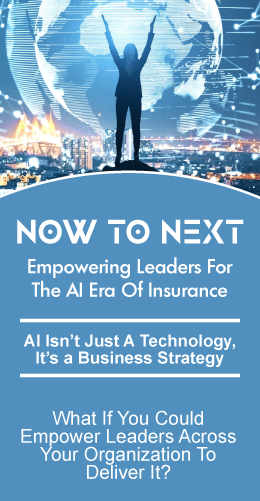The future of insurance is already upon us as traditional insurance companies incorporate more tech-savvy features into their options, and giant tech companies offer insurance services. Insurers, brokers, InsurTech companies, and companies such as Amazon are changing the foundation of insurance into a digital ecosystem providing connected insurance and value-added services for customers.
Insurance technology has been developing at a rapid pace in the last decade. Software robots can now mimic human actions and produce repetitive tasks across multiple business applications; FinTechs and InsurTech companies have made major inroads by creating powerful applications that handle problems and deliver high-quality digital experiences. Mining social media data is improving risk assessment for insurers, increasing the capabilities of fraud detection and enabling new customer experiences.
The future for insurance is a connected insurance atmosphere, a digital playground for everything from tech giants to hip startups. As platform providers change and become more dominant within these ecosystems, they’re beginning to change what is required to compete as an insurance provider.
Connected Data Boosts Innovation
Insurance companies, such as Progressive, began capturing real-time data from customers. Data-capturing devices and connected data coupled with predictive analytics and machine learning are delivering not only improved customer experience and overall satisfaction but better services and new business models that drive growth and profits.
Connected insurance has given way to personalized premiums for auto insurance companies and their customers. A U.K.-based InsurTech company, Bought By Many, has been aggregating users with specific and personalized insurance needs, allowing insurers to offer them services at scale. This kind of service is reflective of what’s going on in the commercial insurance industry. Everything from data patterns to cloud-based applications are forming what it means to offer insurance to customers, helping to personalize an experience and create a more tailor-fit model of connected insurance.
Insurers have a unique level of access to rich datasets. Most insurance companies can be reluctant when it comes to revealing why they ask certain questions because it can reveal too much about how they price out their products based on data. But InsurTech companies have learned that customers trust them more when they show the benefits of providing such data for a more personalized experience.
Companies who caught on to this customer-centric ecosystem have changed their business models to give customers more control over their premiums. This enables the customer to acquire insurance when and where they need insurance and also enables insurers to reward customers based on their risk profile. This pay-as-you-go, pay-as-you-drive structure has been changing the auto insurance game with companies like Root and MetroMile popping up as disruptors.
This model is also becoming popular among health insurance providers, which rewards customers for living healthier lifestyles with lower premiums. They can do this by tracking behavior using wearable technologies, like with Oscar, a Google-backed InsurTech startup that rewards users for every step they take when they are being tracked using a wearable band. Other insurers are collecting data on heart rate and blood sugar levels for diabetics to adjust their risk profile while also providing coverage. This change in the ecosystem has made insurance companies lifestyle companies or essentially tech companies that offer insurance as a bonus.
Offering Perks
Gamification has made its way into every industry as mobile app usage has seen a sharp rise. User experience and user design show up in insurance companies’ assessments of customers by providing a progress bar to show how much longer the customer has until they are finished. It’s a small but simple way to include gamification into a process that’s usually seen as a nuisance.
Gamification can help to display information for customers more clearly so they choose the right product and service and get the lowest premium for it. This could include having them answer a few basic questions that apply to them the most. Plus, with pay-as-you-go, companies are offering perks and discounts when customers track their lifestyle habits and daily goals, hitting milestones and competing in a friendly way with others in their health community.
AI and UX Design
UX design has paved the way for a more streamlined approach to holding the attention of the customer and prospects. Companies like New York Life offer up an abundant knowledge base for customers looking to get information on the purpose of life insurance and what types of coverage they can purchase. The company has made it easier for first-time insurance buyers to sift through stacks of policies with dense information and get to the information they need on a simpler scale.
When it comes to artificial intelligence (AI), companies like Lemonade, offering renters and home insurance policies for homes, apartments, co-ops, and condos, are using AI bots who can help find the best coverage through web chat features. Plus, mobile apps are allowing customers to get insured in under 90 seconds and paid in three minutes. This is making insurance sexy as opposed to dealing with the long, drawn-out process of legalese that would turn customers away in the past.
InsurTech technology has created a pathway for mobile diagnosis and prescribing, like with Roman, a men’s health startup that allows men to find the service they need for things like erectile dysfunction and hair loss. While not an insurance company, Roman is mirroring a new wave of Teladoc services that most major companies are implementing now with 24/7 access to health care.
The future of insurance is ripe with opportunity for insurers who move beyond a product focus and look deeply into the goals and outcomes that are most important to their customers. Those who learn how to harness data, services, and devices in the digital ecosystems surrounding the insured by leveraging emerging technology and utilizing awesome UX to help customers understand, prevent, and manage risk will emerge as the future insurance leaders.








